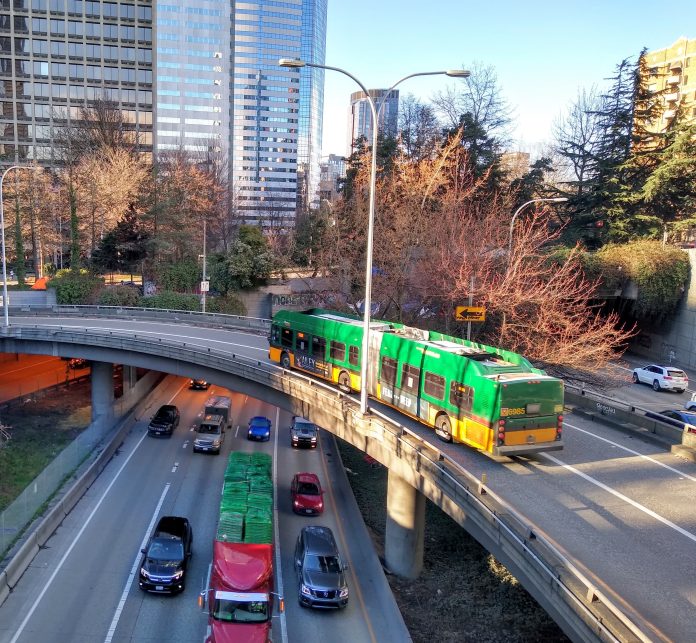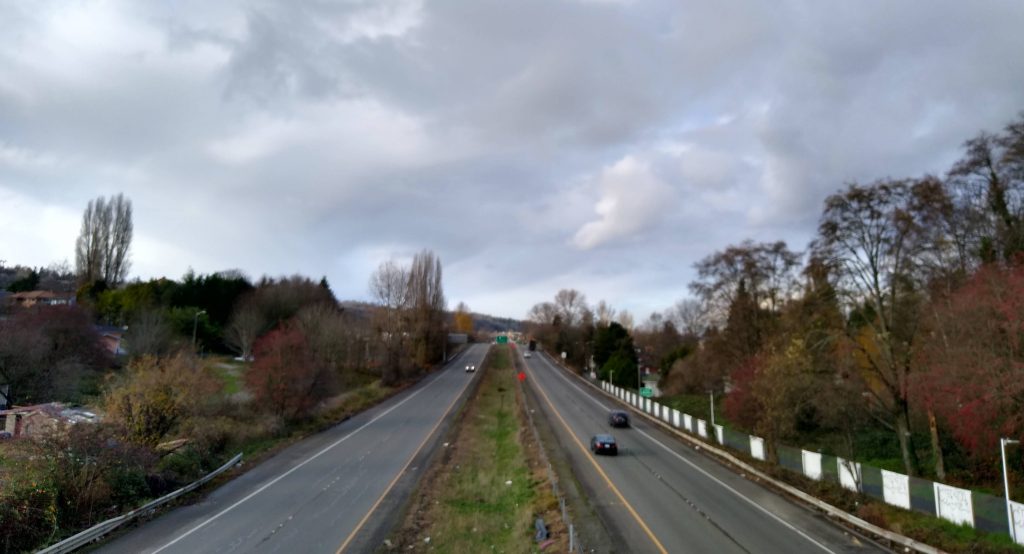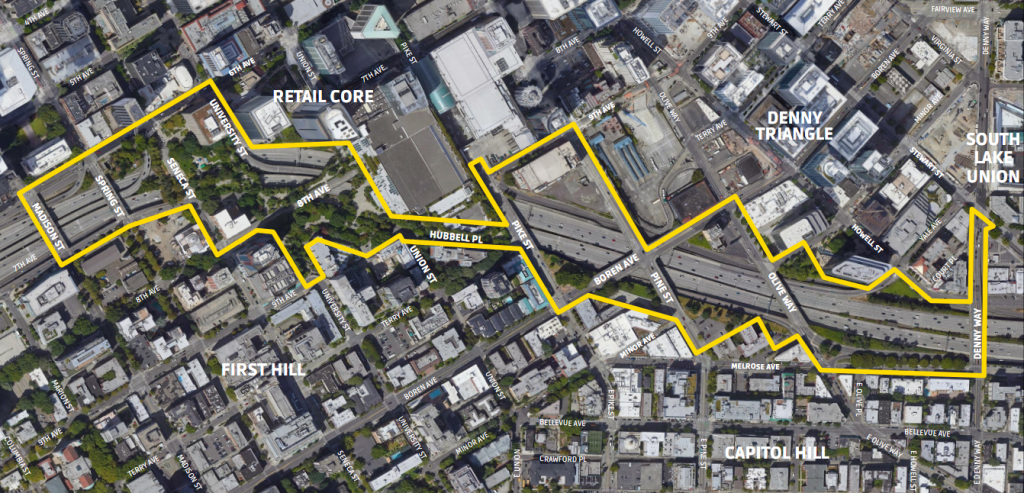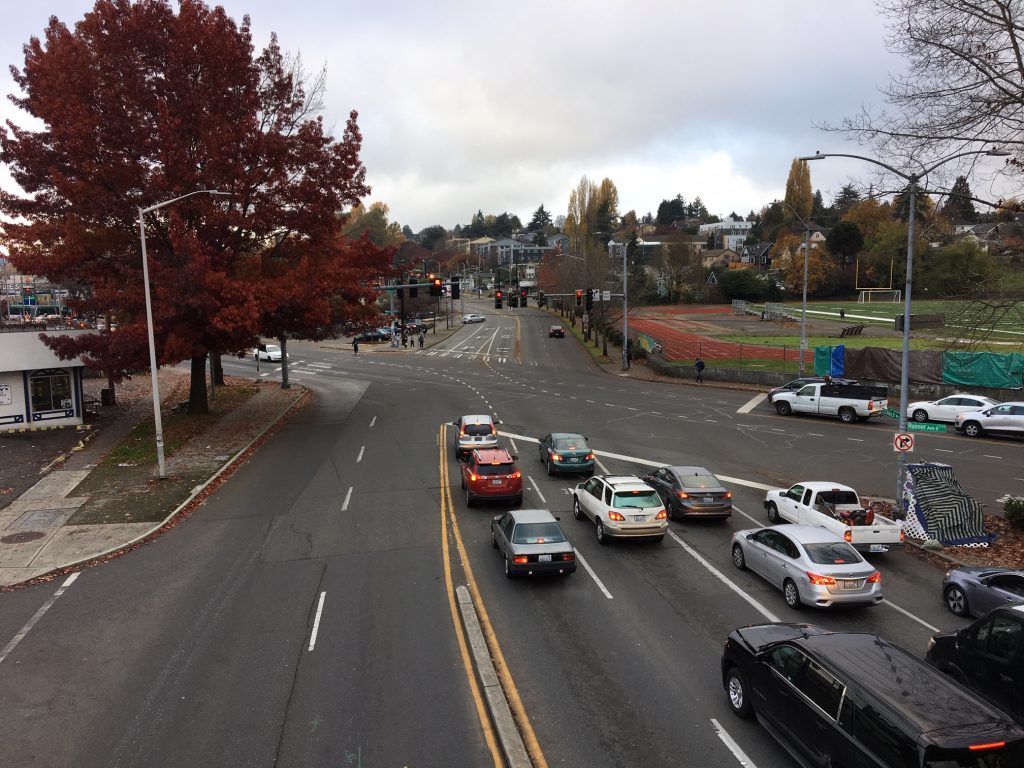
As the House and Senate transportation committees prepare to get their unified Move Ahead Washington transportation package through their respective houses, they are also moving to update the state’s two-year biennial transportation budget adopted last year. Some of the biggest changes align Governor Inslee’s proposed modifications to that budget with the Move Ahead Washington proposal. But there are plenty of new tweaks included in both the Senate and House versions of the supplemental transportation budget, and a lot of those tweaks would move transportation projects forward in Seattle.
In those add-ons we can see the fingerprints of a number of Seattle-area state legislators.
$600,000 to study the reconnecting of South Park
Earlier this session, the Senate transportation committee held a work session on the concept of “reconnecting communities.” After hearing from a national expert on highway removal, the committee heard from Coté Soerens, a community member in South Park pushing for a reexamination of the segment of state-owned SR 99 that cuts the neighborhood in half, separating Concord International School from the South Park public library, for example. In December, Agueda Pacheco detailed for The Urbanist the work that is being done to turn this idea into a reality, with the help of the Seattle Office of Planning & Community Development (OPCD).
The $600,000 from the state comes with an expectation that a neighborhood-led, community visioning process takes place and a feasibility study is conducted by OPCD the examine different futures for the stretch of highway, “including the transfer of the land to a neighborhood- led community land trust.”

“The project must be conducted in coordination and partnership with neighborhood residents, neighborhood industrial and commercial representatives, the state department of transportation, and other entities and neighborhoods potentially impacted by changes to the operation of state route number 99,” the budget bill reads. Sen. Rebecca Saldaña, who represents much of South Seattle and is vice-chair of the Senate transportation committee, said late last year she saw a pathway forward for this idea, and it seems like she also had a hand in opening the door.
$2.5 million to study the future of I-5 in Seattle, including a highway lid
When Sen. Jamie Pedersen, who represents the area of central Seattle to Saldaña’s north, appeared at a environmental caucus meeting in his district before the legislative session, there was one transportation topic that seemed to excite him the most: the idea of lidding I-5, which bisects his 43rd district. Pedersen asked his constituents to imagine building I-5 through the middle of Seattle now, and called the highway a blight on the district.
“We should not accept the permanent scar of I-5,” Pedersen said.
The idea of lidding I-5 is much further along than the idea of removing SR 99 in South Park. In late 2020, the City of Seattle released the results of a feasibility study on adding highway lids between Madison Street and Denny Way. That feasibility study raised ideas with a lot of potential, but more study would be needed. That’s where this latest round of funding comes in.

The entirety of the $2.5 million would not go toward studying the lid. That funding also includes direction to conduct a Planning and Environmental Linkage (PEL) study, which will look at other issues surrounding the most constrained interstate highway in the state.
The PEL study will “assess strategies and actions to address preservation and safety needs; climate change; improve corridor efficiency and person-throughput; and operate managed lanes effectively in the long term. The study must include a robust public engagement program; and must assess multimodal transportation system impacts as well as economic, revenue and equity considerations,” the senate bill reads.
The lid work, as directed by the budget, will be a collaboration between Seattle and the Washington State Department of Transportation (WSDOT) and will look at potential changes to the existing highway ramp configuration, geotechnical assessments, and cost estimates to inform future work.
The House transportation budget doesn’t include this line item, so in order to make it into law it will need to survive a conference process between the two houses. Starting work on a highway lid is still a long ways off, but its inclusion is a big step by the legislature and a sign that the project has strong supporters at the state level.
$900,000 toward improvements at Rainier Avenue and Martin Luther King Jr Way
Another unique item that the Senate bill contains is a $1 million to improvements at Rainier Avenue and MLK Jr Way in Seattle. One of the most pedestrian-hostile intersections in the city, large-scale changes have been envisioned here for a long time. This year, the Seattle Department of Transportation (SDOT) will start work on what were supposed to be “near term” improvements at the intersection back when voters approved the Move Seattle levy in 2015. Those improvements include a new marked crosswalk across a leg of the intersections where pedestrians are currently not allowed to cross, curb bulbs, and revamped sidewalks. These improvements are planned with an adjacent protected bike lane project connecting the intersection north to soon-to-open Judkins Park light rail station at I-90.
But one of the largest priorities for the vicinity was a relocation of the existing bus transit center, which is a long walk from the light rail station, an element of the project that SDOT did not have funding to pursue. It’s not clear yet exactly what this additional state funding could do, with the full Accessible Mount Baker vision still looking very pie-in-the-sky, but it will keep improvements here alive.

Marching orders on Aurora Avenue: move fast
This biennial budget includes grant for SDOT to design improvements to Aurora Avenue N, one of the most dangerous stretches of state highway in Washington. Funds for construction of those improvements have now been secured with a $50 million line item in the Move Ahead Washington package, the single largest project identified in the long list of pedestrian and bicycle projects in the package. Now, the Senate’s version of the 2022 budget update includes some marching orders to Seattle: design these improvements fast, by October 31 of this year, so that construction can start no later than June 1, 2023.
This is probably an unrealistic timeline: SDOT has said they aren’t formally starting the process of designing Aurora improvements until the middle of 2022. But this callout in the budget clearly comes from a place of recognizing the fact that the further we wait to identify and construct improvements to Aurora, the more people will be hurt and possibly die. SDOT spent the entirety of 2021 just studying where to locate a protected bike lane in another neighborhood: this lack of urgency that is a serious problem with safety improvements can really only be addressed by attaching strings to the money. Of course, improvements to Aurora might not be happening at all except for some strong advocacy.
WSDOT would need to sign off on changes to street right-of-way (though not necessarily changes in the sidewalk right-of-way) since they co-manage the highway though a City-State agreement.
Much more to come?
These aren’t the only line items in the budget impacting Seattle, of course, but their inclusion tells us a lot about the direction state legislators are trying to push Seattle. The city will be well positioned over the next few years to compete for grants under the programs expanded with Move Ahead Washington. But with Seattle’s leaders taking a step back from emphasizing transportation as an area where the city should be making huge strides, with Mayor Bruce Harrell emphasizing a “back to basics” approach, lawmakers in Olympia are clearly interested in picking up the ball and running with it.
Ryan Packer has been writing for The Urbanist since 2015, and currently reports full-time as Contributing Editor. Their beats are transportation, land use, public space, traffic safety, and obscure community meetings. Packer has also reported for other regional outlets including BikePortland, Seattle Met, and PubliCola. They live in the Capitol Hill neighborhood of Seattle.

